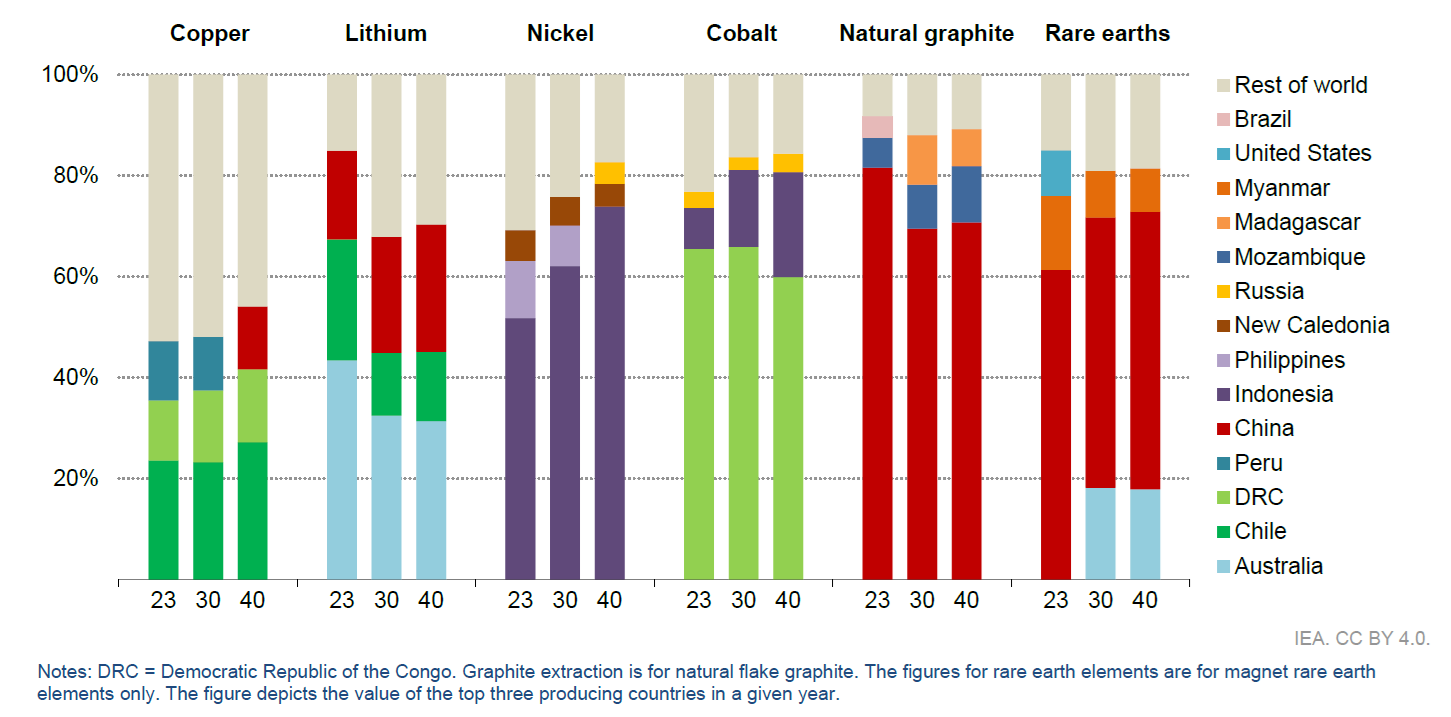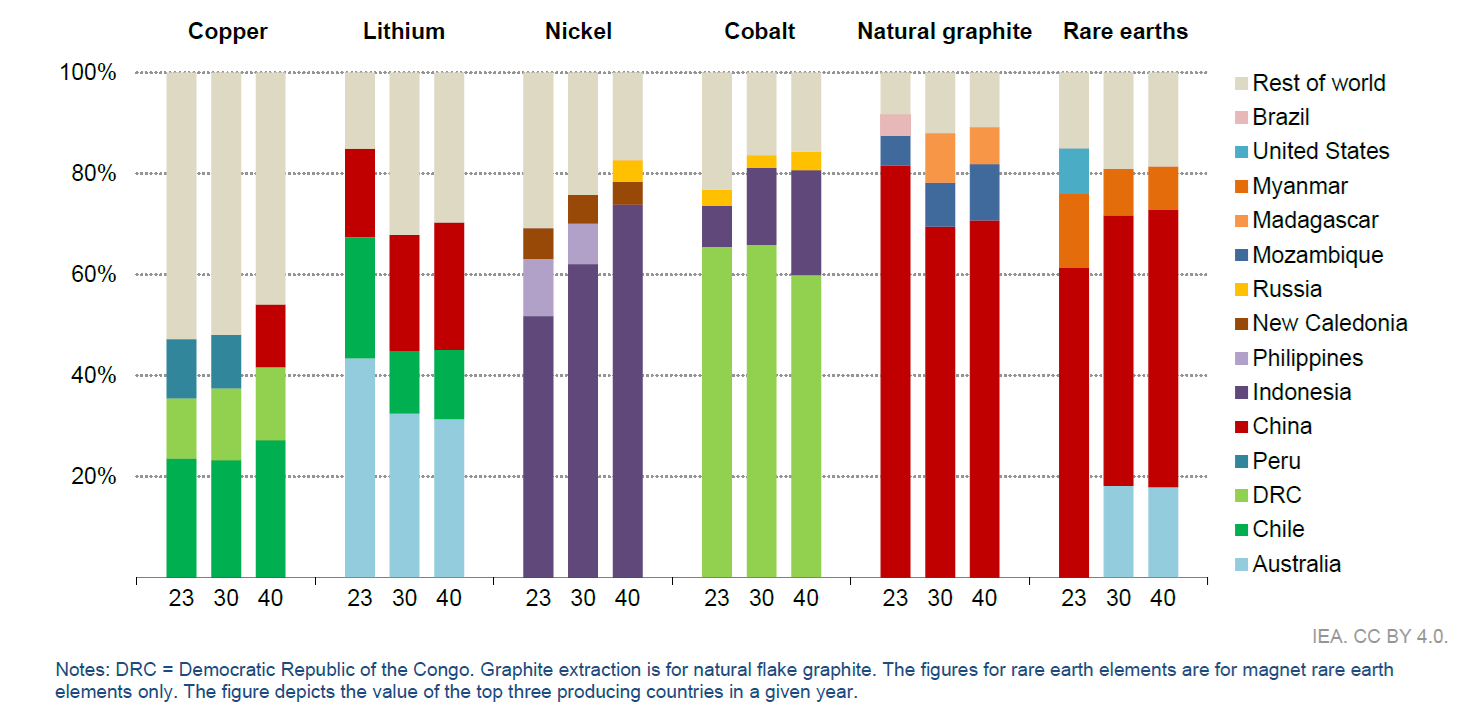New Geopolitical Risks in the Renewable Energy Era
5/15 2025
Author: Satoshi Honma
Japan relies on imports for most of its fossil fuels, and has long been affected by geopolitical risks in the politically unstable Middle East.
In recent years, Japan has also been exposed to fluctuations in oil prices due to Russia's invasion of Ukraine and the Israel-Gaza conflict. Currently, a global transition from fossil energy to renewable energy is underway, with one example being the shift in automotive power sources from gasoline to electricity.
However, will the transition to renewable energy and the spread of electric vehicles reduce such geopolitical risks? The answer is not so straightforward. Renewable energy requires rare metals and rare earth elements, and the expansion of green energy also increases demand for these mineral resources.
For example, lithium, as a key material for lithium-ion batteries, is experiencing rapidly growing demand due to the increasing need for electric vehicle batteries. According to the IEA (2024), global battery demand is projected to increase 14-fold by 2050. Furthermore, rare earth elements such as neodymium and dysprosium are essential for electric vehicle drive motors. Neodymium is used in the manufacture of powerful permanent magnets, while dysprosium plays an important role in improving the high-temperature stability of these magnets. Cobalt and nickel are also essential materials for improving the performance of lithium-ion batteries.
Figures 1 and 2 depict the geographical distribution of mining production and refined material manufacturing for these critical minerals.

Source: IEA (2024)

Source: IEA (2024)
As these figures clearly illustrate, the production of mineral resources and refined materials is concentrated in a few countries. China's dominance is particularly notable in the refining process, and China, which is also a major solar power nation, has a prominent presence.
Thus, while the transition to renewable energy moves away from dependence on oil, it creates new resource dependencies and geopolitical risks. Attention to geopolitical risks different from those of the oil century is necessary.
References
International Energy Agency (2024) Global Critical Minerals Outlook 2024. https://www.iea.org/reports/global-critical-minerals-outlook-2024
